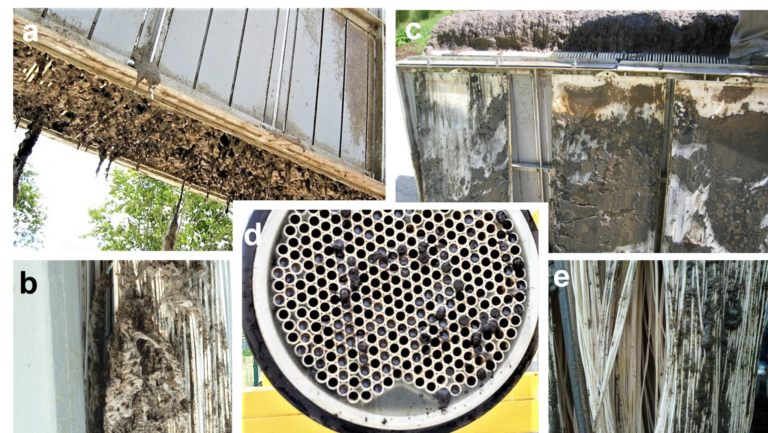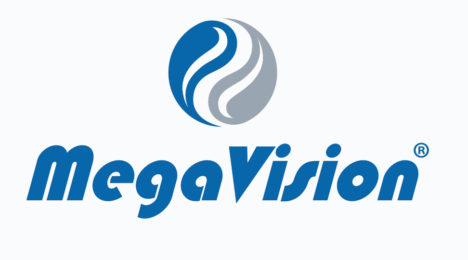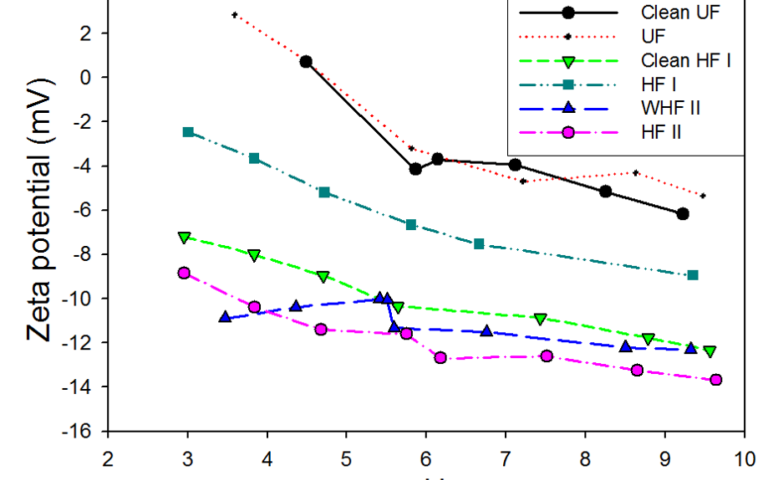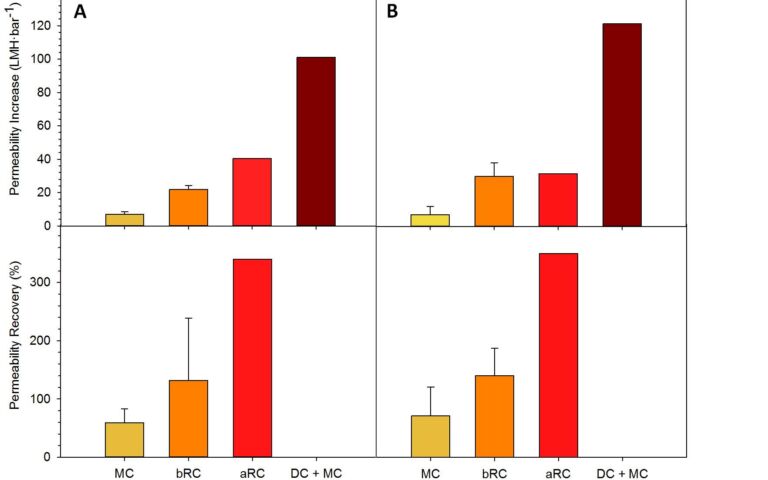MBR technology problems and solutions: report from The MBR Clinic

Dennis Livingston and Simon Judd
The MBR Clinic
Introduction
The first MBR Clinic, held on Wednesday 24 May 2023, featured Dennis Livingston, Technical Director of M|MBR Systems, and Simon Judd, Director of Judd Water and Wastewater Consultants, together with over 40 attendees from across the world.
Dennis kicked off proceedings with his view of some of the key issues concerning MBR implementation. His extensive personal experience of the immersed flat sheet (iFS) configuration extends back to April 2001 − actually April Fool’s Day, as he was at pains to point out. There were no iFS products in the US at that time, the first such installation being in 2002 based on rigid flat plates; the first flexible iFS-based composite membranes came a decade later in 2012.
Dennis highlighted that every issue at an MBR manifests itself as a membrane problem but that crucially the origins of the problem normally lie elsewhere.
Below is a summary of the full discussion, with the questions from the participants and responses from Dennis (DL) and Simon (SJ).
Q&A session
1. What other aspects of fine screening do you see as critical for protecting MBR modules (screen capture ratio/efficiency, velocity, etc.)? What is the best way to validate the fine screening during startup of an MBR plant? Matthew Rutherford (MR)
DL: "The aperture size is important: 2 mm is normally the most appropriate rating, though the membrane technology provider should always be consulted, and the flow velocity is important. The sieve test, conducted regularly over an extended time period, provides a good indication of the efficacy of the screening through the determination of the coarse suspended solids. But quarterly inspection of the membrane module for ragging or sludging is the best indicator.
Rag accumulation can be addressed by recycling part of the mixed liquor back to the head of works − provided that the installed screen has sufficient capacity to allow this. Rags can accumulate regardless of the screen rating or efficacy, since they result from the agglomeration of fibrous material in the tank. Hence rescreening in this manner is an effective means of controlling ragging."
MR then indicated that even a chicken wire placed downstream of an operating screen can pick up fibrous material.
In response to a subsequent question on re-screening by Dale Miller, DL mentioned that recycling ~10% of the total tankage volume per day through the fine screen (i.e. re-screening) has been recommended by Kubota. The percentage can increase to 15% if ragging is a recognised problem.
2. When is it appropriate to use an MBR, MABR or MBBR? Jesús Marín (JM)
DL: "An MBR isn’t necessarily required for process intensification below 1.5, depending on the downstream application. Reuse applications would be likely to benefit from MBR implementation."
SJ: "The primary difference between the three technologies is the use of a membrane for filtration in the MBR. The MBBR and MABR are both fixed film processes with no membrane filtration. So, only the MBR offers enhanced clarification with substantial disinfection."
3. Could you comment on the current status and future of silicon carbide (SiC) flat sheets in MBR applications, and any challenges? Ron Slabaugh (RS)
DL: "SiC membranes are naturally highly hydrophilic. However, irrespective of the hydrophilicity of the membrane or other membrane material-related factors, the flux is ultimately determined by the biofilm on the membrane surface. SiC and ceramic membranes nonetheless have a part to play in MBR technology."
RS then elaborated that his question related to his experience with a small SiC membrane-based thickener system that was subject to flux reduction when loaded with either WAS or filter backwash water due to bridging (or sludging – the accumulation of solids in the membrane channels). The maximum solids concentration achieved was ~2%.
DL pointed out that membrane thickeners could normally achieve >3% solids. Often, the problem in membrane thickeners relates to the diffusers, homogeneous distribution of the air bubbles being very important.
The subject of sludging was then revisited. DL pointed out that flexible (composite) membranes with open sides have been shown to limit the tenacity of the sludging; the desludge/cleaning rate has been shown to increase from ~1 m2/minute for a rigid-plate iFS membrane to 14−24 m2/minute for an open-sided flexible iFS membrane.
DL also mentioned that alum dosing can make the sludge more clay-like and 'sticky'. He recommended increasing the aeration rate and reducing the flux to maintain throughput in the thickener.
4. From experience, what is the best long-term approach in relation to ease of operation and reduced cleaning frequencies for flat sheet membranes, pumped (suction) or gravity (head difference) flow through the membrane? Mario Farrugia (MF)
DL: "Cleaning is site-specific, situational and dynamic. It is generally better to pro-actively clean with more dilute bleach to try and prevent permeability decline. Too much cleaning with a strong bleach at low temperatures (<11°C) can cause a deterioration in sludge quality, releasing EPS (extracellular polymeric substances) and exacerbating fouling as a result: any permeability recovery post-cleaning is lost within 1−3 days. High bleach loads of 0.4−0.6% bleach have been shown to increase soluble COD, to 120−140 mg/L in this instance, at a municipal MBR causing a reduction in permeability due to fouling and a corresponding halving of the flow through the plant. Reducing the bleach concentration at this plant reduced the sCOD to <60 mg/L COD and increased permeability recovery allowing operation at the design flow.
Occasionally a recovery clean at higher bleach concentrations is required, but regular maintenance cleaning should be conducted at lower bleach concentrations. Finally, it’s good to benchmark performance early on once the plant has stabilized (say, 1−2 SRTs following start up) to establish the optimum permeability and the associated maintenance cleaning protocol."
5. What is the likelihood of nanofiber membranes, with their high permeability and surface area, being promoted for use in MBR systems? Mustafa Taher (MT)
DL: "For an FS membrane, the minimum membrane separation is around 6 mm; below this separation distance the risk of clogging becomes significant. So, high packing densities – as offered by nanofiber membranes – are unlikely to be feasible."
SJ: "Nanofibers are appropriate for enhancing mass transfer of molecules (air, water, dissolved matter, etc), but would most likely be subject to clogging if used for MBRs which have high concentrations of gross solids and susceptible to rag formation."
This led to a discussion of sludge concentration. DL identified a maximum MLSS concentration for sustainable MBR operation of around 18 g/L, and said that this threshold was primarily imposed by oxygen transfer. SJ recalled research by Tamas Zsirai et al at Cranfield University, acceleration of the sludging rate occurred at around 18 g/L, most likely due to a change in rheology.

6. There are certain pronounced/acclaimed benefits of using MBR for treating pulp and paper effluent, but full-scale installations and lesson learned are limited. a) How do you see the prospects of MBR in this industry? b) What are the major challenges you realized from your experience? Khum Gurung (KG)
DL: "We’re currently piloting a plant. Obviously there are fibers in the effluent which are of concern, but we’re not in a position to advise at this point."
KG: "There is limited information available for this application. I’m a bit skeptical about the performance of an MBR when challenged with feedwater containing high levels of fibres, high COD and chlorinated compounds from the bleaching process."
SJ: "It's true that there doesn’t seem to be a lot of information around on this particular application. Get in touch with Dennis in around six months’ time: by then he may have implemented it."
DL then discussed flux, and specifically the importance of identifying the duration of peak flux events as well as their value and frequency. This has been pertinent to the pulp and paper pilot trial his company is involved with. SJ pointed out that peak organic loads, in addition to the hydraulic loads, are also likely to be important for this and most other industrial effluents.
7. How much influence could the electrostatic charge have in the performance of a tubular membrane? How could you obtain a better performance with a very changeable mixed liquor? Ana Maria Rincon Munera (AMRM)
AMRM explained that this related to a landfill leachate treatment application, where the sludge gets attached to the membranes. It was presumed that this could be due to the electrostatic charge.
SJ: "It’s unlikely that electric charge plays much part in fouling or sludging of the membrane. Fouling is more likely to be influenced by the mixed liquor quality. Landfill leachates, particularly aged ones, generate very challenging mixed liquors of low filterability."
DL: "It may be worth investigating flux-enhancing polymers, or coagulants, which can aggregate the colloidal material and make it less likely for it to blind the membrane. These flux enhancing chemicals can increase permeability by 20–50% in some cases – at least in the short term."
8. What is your opinion about bulking sludge / filamentous sludge / sludge volume index rise in MBR aerobic systems? Johan Raap (JR)
DL: "Bulking sludge is normally indicative of the health of the process microbiology and sludge quality, specifically its filterability. If it becomes an issue then we would recommend long-term fixes like increasing the DO concentration, adding nutrients and reducing the SRT. A short-term fix is polymer dosing, as well as chemical cleaning if membrane fouling propensity has been affected (which is normally the case)."
SJ: "Normally filamentous sludge is associated with foaming in an MBR, as with a conventional ASP."
9. Sometimes there is very low influent BOD which reduces the MBR permeate due to fouling, so what's your suggestion for addressing this situation? Nilesh Kothari (NK)
DL: "If the BOD remains low for an extended period, the VSS levels decrease (due to endogenous decay) as the sludge age increases. The endogenous decay increases the EPS levels which then cause membrane fouling. This can be addressed by wasting more sludge (i.e. reducing the SRT) to reduce the MLSS – to as low as 2–5 g/L, if necessary. If this isn’t enough then try taking compartments of the process tank out of service to reduce the working volume.
If the process includes biological nutrient removal then it will be necessary to add organic carbon to sustain the microbiology."
10. For applications like water reuse, do you see a need to move towards regular demonstration of performance (like MITs) for public protection? Katherine Scott (KS)
DL: "Turbidity testing has proved to be a good surrogate for membrane integrity testing. In the past, around 2001–04, there was a push to introduce MITs for MBRs in indirect potable reuse applications. But small breaches in MBR membranes will immediately plug with debris from the mixed liquor, regardless of the membrane geometry, such that the effective pore size remains below 0.1 µm. SDI values in the MBR permeate are easily <3 and sometimes <1 and turbidities <0.05–0.1 NTU. So, I don’t personally think MITs are required but it depends on the application and regulation. Otherwise, turbidity monitoring is sufficient."
11. In the treated water line after the MBR, we typically find trace amounts of the mixed liquor for a short time during the discharge cycle, and then it becomes clean again. Any idea why that could be the cause of this trace amount during discharge? Kevin Aziba (KA)
DL: "It’s possible that there’s been a breach at some point that has caused growth in the permeate pipes. An intensive bleach clean on the pipes is needed to remove this source. Alternatively, there could be an existing breach (of a seal around the piping or the membrane, for example, rather than the membrane itself – which is less likely) which causes an initial flow of mixed liquor into the product before the membrane plugs and the permeate TSS comes back down. Check all the joints, flanges, etc: the breach is more likely to be in the connectors than in the membrane."
And finally...
This first MBR Clinic raised some excellent real-world O&M issues from existing installations, and sludge quality in particular, but there were also more general questions on technologies and processes. There's certainly a lot to discuss, and it was great to be able to share knowledge.
The MBR Site would like to thank everyone for their time and input, and hope it was a useful session. Thanks most of all to Dennis Livingston for sparing the time and providing such great insight.
And who knows − if there is enough interest, we may even do this again...









